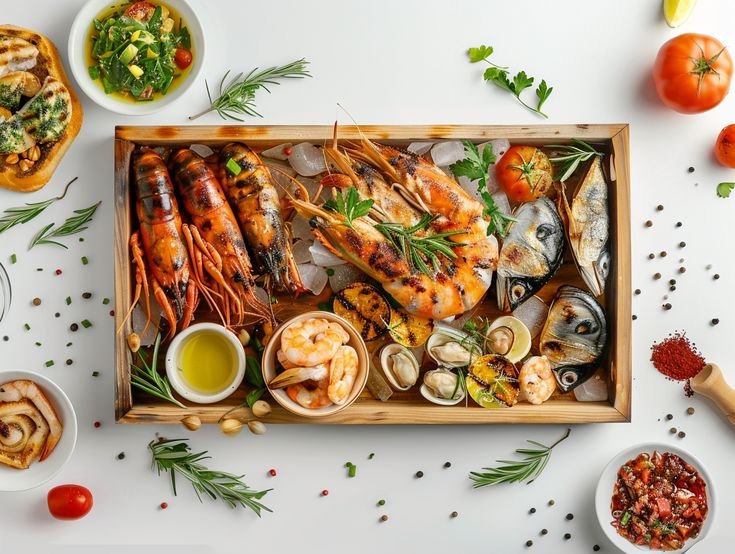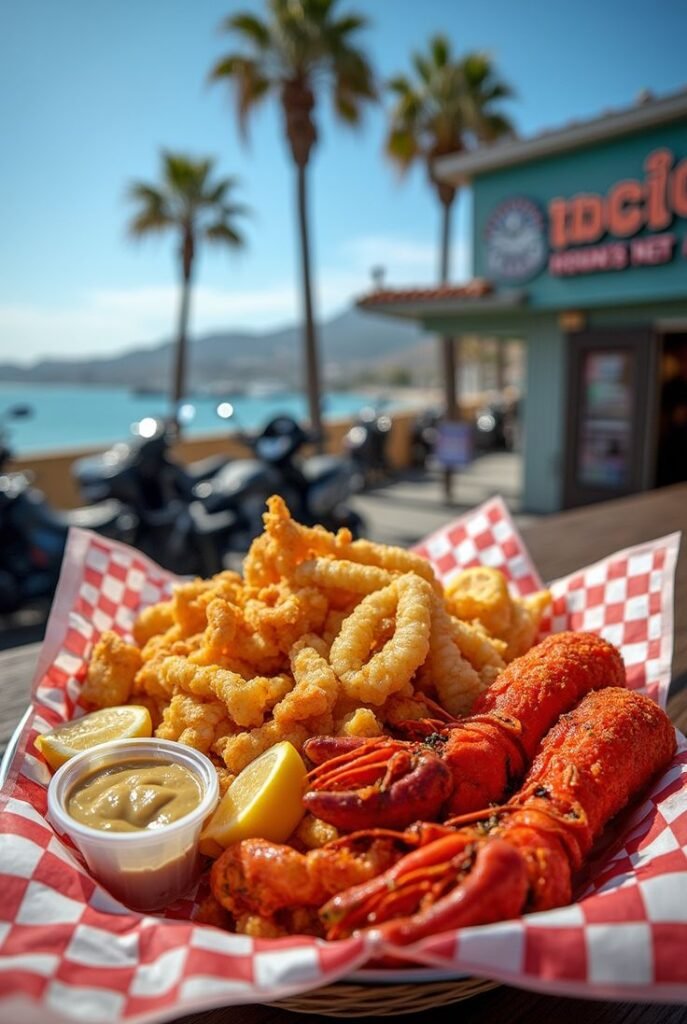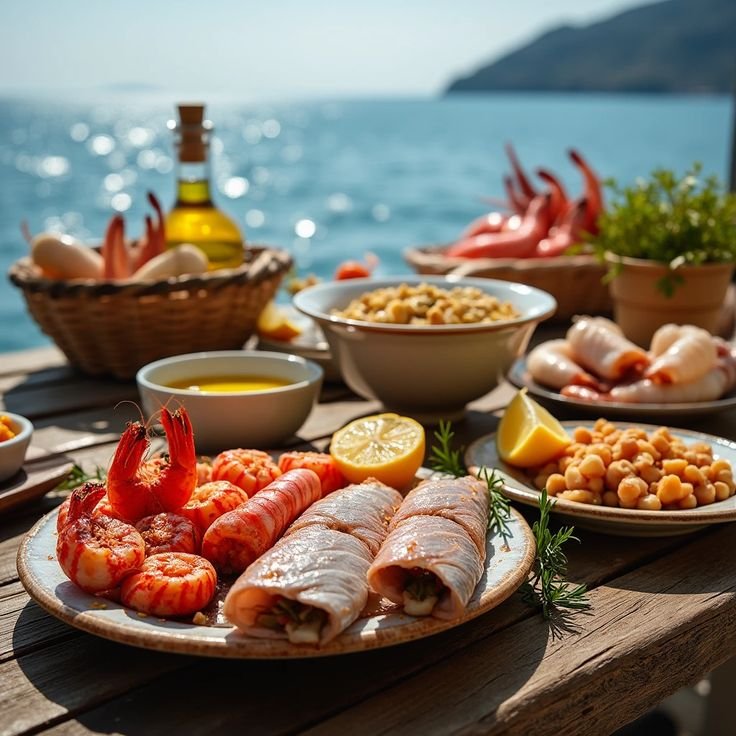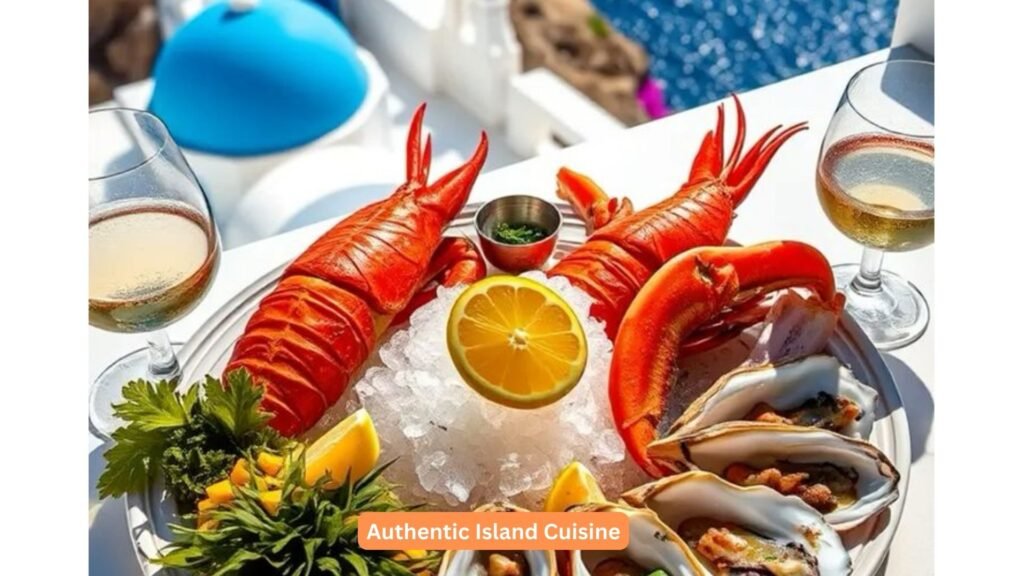Island cuisines represent some of the world’s most fascinating culinary traditions, each telling a unique story of resilience, adaptation, and cultural exchange. In tropical paradises across the globe, traditional tropical dishes have evolved over centuries, shaped by geography, available resources, colonial influences, and indigenous practices. These authentic island cuisines offer more than just nourishment—they provide a tangible connection to history, community rituals, and cultural identity that continues to thrive despite the homogenizing forces of globalization.
The brilliance of authentic island cuisine lies in its resourcefulness—transforming local ingredients through time-honored techniques into dishes that capture the essence of island life. From the vibrant street foods of the Caribbean to the complex ceremonial feasts of Polynesia, these traditional tropical dishes represent ingenious adaptations to island environments while honoring ancestral knowledge that has been passed down through generations.
The Evolution of Island Culinary Traditions
Several key factors have influenced the development of authentic island cuisines and their traditional tropical dishes:
Environmental Determinants
Island cuisine is fundamentally shaped by what the surrounding land and sea provide. The abundance of seafood, tropical fruits, root vegetables, and native herbs creates a natural pantry that defines the foundation of traditional dishes. Limited resources have historically fostered creativity and sustainable practices, with island communities developing sophisticated preservation techniques and waste-free cooking methods that maximize every ingredient.
Historical Crossroads
Many tropical islands served as important trading posts, colonial outposts, or migration destinations, creating unique cultural intersections. The culinary traditions we see today often reflect these complex histories—African techniques meeting European ingredients, Asian spices enhancing indigenous preparations, and indigenous cooking methods preserving cultural identity despite outside influences.
Ceremonial Significance
Food in island cultures frequently transcends mere sustenance, playing central roles in religious ceremonies, life celebrations, and community gatherings. Many traditional dishes are inseparable from the cultural practices that accompany them, from the Hawaiian luau to Caribbean heritage festivals.
12 Iconic Traditional Tropical Dishes from Island Paradises
1. Poisson Cru (French Polynesia)
The Soul of Tahitian Cuisine
Poisson Cru embodies the essence of French Polynesian gastronomy—a harmonious marriage of fresh local resources and introduced techniques. This raw fish salad marinated in coconut milk and lime juice represents the quintessential island approach to cuisine: simple, fresh, and intimately connected to the surrounding environment. The dish traces its roots to ancient Polynesian raw fish preparations, later influenced by European contact but maintaining its cultural significance as both everyday sustenance and ceremonial food.
- The traditional preparation requires the freshest possible fish (typically tuna) caught the same day, demonstrating the integral relationship between Tahitian communities and the surrounding ocean that sustains them.
- Authentic poisson cru uses hand-squeezed coconut milk rather than canned varieties, with elders in many communities still demonstrating the traditional wringing technique using husks and fresh coconut meat.
- The dish exemplifies the cultural value of simplicity and freshness in Polynesian cuisine, with each ingredient (lime, coconut, fish, vegetables) representing an important element of the island’s natural resources.
- Preparation traditionally involves a communal effort, with different family members responsible for specific tasks—fishing, coconut preparation, and vegetable chopping—making the creation of the dish itself a form of cultural bonding.
2. Kokoda (Fiji)
Fiji’s Oceanic Treasure
Kokoda represents Fiji’s answer to ceviche—a delicate balance of fresh fish “cooked” in citrus juice and enriched with coconut cream. This dish speaks to the ingenuity of Pacific Islanders who developed sophisticated raw food preparations long before refrigeration. Kokoda reflects the abundance of Fiji’s waters and the cultural importance of communal food preparation in Fijian society.
- Traditional kokoda preparation involves cutting fish into uniform cubes and marinating it in lemon or lime juice for several hours until the flesh becomes opaque, demonstrating the sophisticated food science understanding passed through generations.
- The coconut cream used in authentic kokoda is freshly extracted using traditional methods that have remained unchanged for centuries despite the availability of commercial alternatives.
- The dish is traditionally served in hollowed coconut halves or large shells, connecting the presentation directly to the natural resources that provide the ingredients.
- In many Fijian communities, kokoda preparation knowledge is passed from mother to daughter, with specific family variations considered cherished cultural heritage.
3. Callaloo (Trinidad and Tobago)
The Melting Pot of Caribbean Heritage
Callaloo embodies the cultural fusion that defines Caribbean cuisine—a thick, velvety soup made from dasheen leaves (taro) or amaranth, combined with okra, coconut milk, and often crab or salt pork. This one-pot wonder traces its roots to West African slave communities who adapted their traditional leafy stews to the available ingredients of their new tropical home, creating a dish that has become a cornerstone of Trinidadian identity.
- The traditional preparation method involves careful removal of the central ribs from dasheen leaves to eliminate irritants, representing generational knowledge of ingredient processing that maximizes nutrition while ensuring safety.
- Authentic callaloo requires patient, slow cooking—often exceeding two hours—using a swizzle stick (specific wooden tool with crosspieces at the end) to break down the leaves, demonstrating the deliberate pace of traditional Caribbean cooking.
- The dish often incorporates land crabs harvested during specific phases of the moon, connecting the culinary practice to natural cycles and traditional ecological knowledge.
- Callaloo features prominently in Sunday family gatherings across Trinidad and Tobago, where its preparation becomes a multi-generational activity that strengthens community bonds and cultural continuity.
4. Kālua Pig (Hawaii)
Sacred Earth Oven Tradition
Kālua Pig stands as the centerpiece of the traditional Hawaiian luau—whole pig slow-cooked in an underground imu (earth oven). This cooking method represents one of the most significant cultural practices in Hawaiian heritage, connecting modern Hawaiians to ancient Polynesian traditions that predate Western contact. The preparation involves intensive community participation and deep cultural symbolism that extends beyond mere cooking into spiritual practice.
- The creation of the imu itself follows precise protocols developed over centuries—banana stumps positioned strategically, specific volcanic stones selected for heat retention, and ti leaves arranged in patterns that honor cultural traditions.
- Traditional preparation begins before dawn with the lighting of the imu, overseen by a designated expert whose knowledge has typically been passed down through multiple generations.
- The entire process traditionally involves specific chants and offerings that connect the preparation to Hawaiian cosmology and ancestral reverence, making it as much spiritual practice as culinary technique.
- Authentic kālua preparation operates on a community scale rather than individual portions, reinforcing Hawaiian values of abundance, generosity, and collective celebration that remain central to cultural identity despite centuries of outside influence.
5. Gado-Gado (Indonesia)
The Archipelago’s Vegetable Mosaic
Gado-Gado represents Indonesia’s extraordinary diversity—a vibrant salad of blanched vegetables, eggs, tempeh, and tofu dressed with a rich peanut sauce. This dish showcases the Indonesian archipelago’s vegetable abundance and the influence of multiple cultural traditions across its 17,000+ islands. While outwardly simple, authentic gado-gado preparation involves nuanced techniques that reveal Indonesia’s sophisticated approach to balancing flavors, textures, and nutritional elements.
- The traditional peanut sauce requires careful dry-roasting of peanuts followed by hand-grinding using stone implements, a practice that releases oils differently than machine processing and creates the distinctive texture that defines an authentic preparation.
- Each vegetable component is blanched separately with precise timing to ensure proper texture—neither too crisp nor too soft—demonstrating the technical precision underlying seemingly casual island cuisine.
- Authentic gado-gado incorporates bitter elements (like papaya leaves in some regions) deliberately to create the complex flavor profile that distinguishes it from simpler peanut vegetable dishes found throughout Southeast Asia.
- The dish traditionally serves as both everyday fare and ceremonial food, with elaborate versions prepared for lifecycle celebrations that include specific ingredients chosen for their symbolic significance in Indonesian cultural traditions.
6. Jamaican Jerk Chicken (Jamaica)
Freedom Fighters’ Culinary Legacy
Jerk chicken embodies Jamaica’s revolutionary spirit—a fiery, smoke-infused preparation with roots in Maroon communities formed by escaped slaves who preserved African cooking techniques while adapting to Jamaican mountains. The distinct jerk method—meat dry-rubbed with a complex spice mixture and slow-smoked over pimento wood—represents culinary resistance and cultural preservation against tremendous historical pressure.
- Authentic jerk preparation requires specific wood from the allspice (pimento) tree, creating the signature aromatic smoke that cannot be replicated with substitute materials or conventional grilling methods.
- Traditional jerk rubs contain upwards of fifteen ingredients including Scotch bonnet peppers, allspice berries, thyme, and scallions, with family recipes guarded as valuable cultural heritage and often including secret elements not shared outside the community.
- The smoking technique originally developed as a preservation method and way to cook without visible flames that might reveal Maroon hiding locations during their resistance to slavery.
- The dish connects modern Jamaicans to their history of resistance and cultural resilience, with traditional jerk preparations still cooked at heritage celebrations and community gatherings that commemorate this aspect of Jamaican identity.
7. Conch Salad (Bahamas)
The Archipelago’s Raw Delicacy
Conch salad represents the Bahamas’ intimate relationship with its marine environment—a vibrant citrus-cured preparation showcasing the native mollusk that has sustained Bahamian communities for centuries. This dish demonstrates the ingenious preservation techniques developed by island communities before refrigeration while celebrating the abundance of local waters through careful harvesting practices that have been sustained across multiple generations.
- Traditional preparation involves a specific technique for extracting the conch meat from its shell using a specialized tool called a “conch knife,” with the skill traditionally passed from experienced fishermen to younger community members.
- The dicing pattern for authentic conch salad requires precise, uniform cuts that maximize texture while ensuring the citrus marinade penetrates evenly—a technique requiring considerable practice and representing a visible mark of culinary expertise in Bahamian communities.
- Proper conch harvesting follows seasonal and size restrictions that long predated formal conservation laws, demonstrating traditional ecological knowledge embedded in culinary practices.
- The dish serves as both everyday sustenance and central feature in community “fish fry” gatherings that strengthen social bonds across Bahamian family islands and maintain cultural continuity despite increasing tourism and globalization pressures.

8. Curried Goat (Caribbean Islands)
The Spice Route’s Island Evolution
Curried goat exemplifies the cultural fusion defining Caribbean identity—a rich, aromatic stew that traveled from India to the islands with indentured laborers in the 19th century before becoming a cornerstone of celebration cooking across Jamaica, Trinidad, and beyond. This dish represents how imported traditions adapt to local conditions while maintaining core cultural elements, creating something entirely new yet connected to multiple heritage streams.
- Traditional preparation begins with an elaborate spice-grinding ritual using a mortar and pestle rather than pre-made curry powders, with specific proportions varying by island and family tradition.
- Authentic versions require long marination (often overnight) with green seasoning bases that vary by island but typically include culantro (different from cilantro), thyme, scallions, and hot peppers.
- The slow cooking technique traditionally uses clay pots over wood fires at precise temperatures that create the characteristic tender texture while preventing the curry from separating.
- The dish forms the centerpiece of significant life celebrations including weddings and religious ceremonies across multiple Caribbean islands, with specific serving protocols that honor the dish’s cultural significance.
9. Loco Moco (Hawaii)
The Modern Traditional Hybrid
Loco Moco represents Hawaii’s talent for cultural synthesis—a modern-traditional comfort food featuring a hamburger patty topped with a fried egg and brown gravy over rice. Created in Hilo during the late 1940s, this dish exemplifies how island cuisines continually evolve, incorporating outside influences while maintaining a distinct sense of place and cultural identity through ingredient selection and serving contexts.
- The traditional gravy uses beef stock made from local island cattle with a technique that differs from mainland American versions, incorporating subtle Asian influences through ingredient additions like mushrooms and specific thickening methods.
- Authentic loco moco features rice prepared specifically in Japanese-derived style introduced to Hawaii through plantation workers, demonstrating how immigrant culinary techniques become integral to evolving island traditions.
- The dish emerged from local drive-ins catering to working-class Hawaiians and teenage surfers seeking affordable, energy-dense meals, connecting it to the islands’ recreational culture and socioeconomic realities.
- Modern variations have evolved across Hawaii’s islands with different meat options and gravy styles, showing how living traditions adapt while maintaining core identity elements that connect diners to specific place and community histories.
10. Mofongo (Puerto Rico)
African Ingenuity in Caribbean Context
Mofongo showcases Puerto Rico’s African heritage through a technique-driven dish of mashed plantains seasoned with garlic, pork cracklings, and olive oil. This hearty creation demonstrates how enslaved West Africans transformed available ingredients into something reminiscent of homeland fufu preparations while incorporating Spanish elements. The resulting dish has become a powerful symbol of Puerto Rican identity and cultural resilience.
- Traditional preparation requires a specific wooden mortar and pestle called a pilón, with the mashing technique following a precise pattern that builds layers of texture impossible to achieve with modern food processors.
- Authentic mofongo incorporates chicharrón (pork cracklings) made through a multi-day process involving specific cuts of pork and careful temperature control during frying stages.
- The dish typically features a sofrito base made with culantro, ajies dulces, and recao—ingredients indigenous to the Caribbean that distinguish Puerto Rican cuisine from mainland Spanish cooking.
- Mofongo preparation remains a source of family pride across Puerto Rico, with techniques and subtle variations passed through generations and often connected to specific regions of the island, creating a mapped culinary geography of traditional preparation styles.

11. Lumpia (Philippines)
The Southeast Asian Spring Roll’s Island Evolution
Lumpia represents the Chinese influence on Philippine cuisine—crispy spring rolls filled with a savory mixture of meat and vegetables that have become integral to Filipino celebration cooking. This dish demonstrates how trade routes and migration patterns shaped island food traditions, with Chinese techniques adapting to local ingredients and cultural contexts to create something distinctly Filipino.
- Traditional lumpia preparation involves hand-rolling extremely thin, almost translucent wrappers made from a specific batter that requires considerable skill to achieve the proper consistency and thickness.
- Authentic filling mixtures follow precise ratios of meat to vegetables with regional variations that can be traced to specific Chinese provincial influences in different parts of the Philippine archipelago.
- The rolling technique itself requires specialized skill developed through practice, with tight cylindrical formations that prevent oil penetration during frying while maintaining structural integrity.
- Lumpia appears at virtually every significant Filipino celebration as part of the traditional kamayan (hands-on) feast style, with large-batch preparation becoming a multi-generational family activity that strengthens cultural bonds and provides opportunities for heritage transmission.
12. Panikeke (Samoa)
Polynesia’s Sweet Heritage
Panikeke exemplifies the ingenuity of Pacific Island dessert traditions—simple yet satisfying Samoan fried dough balls that transform basic ingredients into celebrations of sweetness and texture. While similar to many global fried dough traditions, authentic panikeke incorporates distinctively Polynesian ingredients like coconut milk and banana, connecting modern preparation to pre-colonial Pacific foodways.
- Traditional preparation requires specific coconut extraction techniques for the milk component, with variations in coconut maturity affecting the flavor profile of the finished panikeke.
- Authentic versions often incorporate ripe bananas processed through traditional mashing implements rather than modern blenders, creating a distinctive textural element impossible to replicate with mechanical processing.
- The frying technique follows careful temperature control methods using visual cues rather than thermometers—a skill developed through apprenticeship-style learning within family cooking contexts.
- Panikeke functions in Samoan culture as both everyday treat and ceremonial offering, with elaborate versions prepared for significant community gatherings like weddings and church events that serve as cornerstones of Samoan social organization.

Preserving Authentic Island Cuisine in a Globalized World
Traditional tropical dishes face significant challenges in the modern era—from changing agricultural practices to tourism pressures that can dilute authenticity in favor of standardized offerings. Yet these authentic island cuisines demonstrate remarkable resilience, adapting to changing circumstances while maintaining core cultural elements that connect island communities to their heritage.
The preservation of authentic island cuisine relies on several key factors:
- Documentation efforts by cultural heritage organizations and food anthropologists who work with community elders to record traditional techniques before they disappear
- Revival movements led by island chefs who combine classical culinary training with deep respect for traditional methods, creating contemporary versions that honor heritage while appealing to changing tastes
- Community-based tourism initiatives that offer visitors authentic culinary experiences while ensuring economic benefits flow to local practitioners rather than international corporations
- Educational programs that engage younger generations in traditional food practices, ensuring transmission of both techniques and cultural values embedded in these culinary traditions
Experiencing Authentic Island Cuisine
For those seeking to experience or recreate traditional tropical dishes from island paradises, several approaches can enhance understanding and appreciation:
Respecting Cultural Context
Understanding Culinary Heritage
The Deeper Meaning of Island Food
Approach traditional tropical dishes with awareness of their cultural significance beyond flavors alone. Understanding the historical and social context of authentic island cuisine enriches the culinary experience while showing respect for the communities who created these traditions.
Sourcing Authentic Ingredients
The Foundation of Island Flavors
From Market to Table
Whenever possible, seek out genuine ingredients rather than processed substitutes for authentic island cuisine. While some tropical ingredients may be difficult to obtain in certain regions, focusing on quality and freshness often matters more than exact replication when preparing traditional tropical dishes.
Learning Traditional Techniques
Mastering Island Cooking Methods
The Art of Traditional Preparation
Many authentic island cuisine dishes rely on specific preparation methods that significantly impact the final result. Investing time in learning traditional tropical dishes techniques—whether through community classes, online resources, or visits to island communities—provides insight into the cultural knowledge embedded in these culinary traditions.
The Living Heritage of Island Kitchens
Authentic island cuisine represents far more than exotic flavors or vacation memories—it embodies centuries of cultural adaptation, resistance, creativity, and community building. These twelve traditional tropical dishes offer just a glimpse into the rich culinary heritage of tropical paradises worldwide, each telling a story of human ingenuity and cultural resilience.
By appreciating and preserving these authentic island culinary traditions, we honor not just the flavors but the communities who have maintained these practices through countless generations, often against significant historical pressures. In a world of increasing culinary homogenization, these traditional tropical dishes remind us of the extraordinary diversity of human cultural expression and our shared capacity to transform local resources into profound cultural touchstones that nourish both body and spirit.
Are you ready to embark on your own authentic island cuisine journey? Start by exploring one traditional tropical dish that speaks to you, and experience firsthand the rich cultural heritage that these recipes represent.





